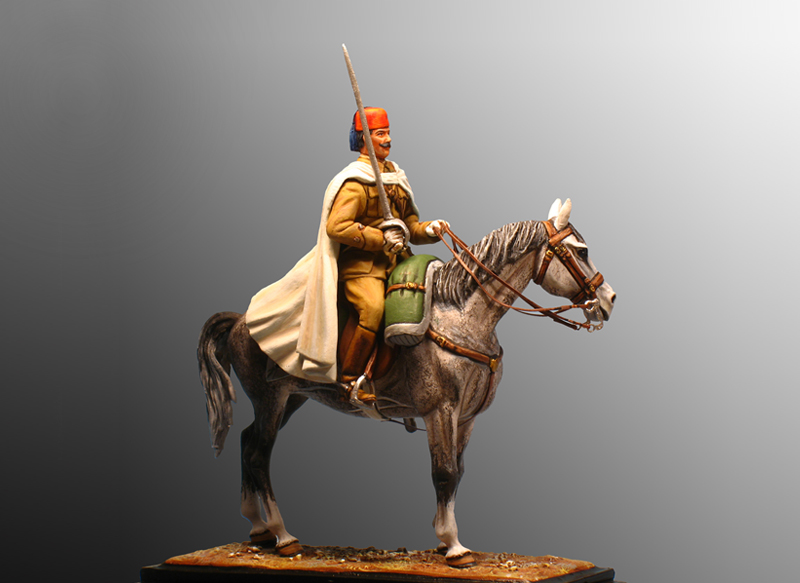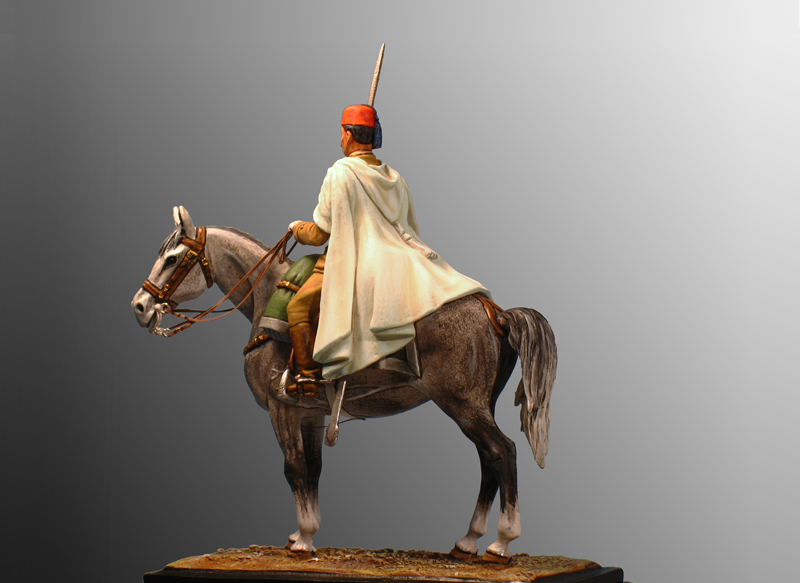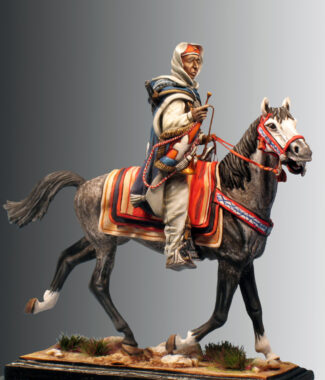On June 30, 1911, the creation of such an indigenous force consisting of four infantry companies and a cavalry squad was approved, and the prestigious soldier Lieutenant Colonel Dámaso Fusté was appointed to command and organize this vanguard unit. Melilla was the place chosen for the gathering and training of the new forces. That same year, in October, the battalion already had 20 officers, 300 native soldiers and 127 horses. These troops were given the name of Indigenous Regular Forces.
Later, in 1914 the Regular Forces were enlarged and divided into four groups. Each of these four groups consisted of two Infantry Tabores made up of three companies plus a Cavalry Tabor made up of three squads. Specifically, the different groups of Indigenous Regular Forces were established as follows:
-1st Indigenous Regular Forces “Tetuan”, quartered in Tetuan.
-2nd Indigenous Regular Forces “Melilla”, Melilla and Nador.
-3rd Indigenous Regular Forces “Ceuta”, Ceuta.
-4th Indigenous Regular Forces “Larache”, Asilah and Larache.
In 1921, after the Annual Disaster, one more unit was created:
-5th Indigenous Regular Forces “Alhucemas”, Segangan.
These forces were part of the vanguard of the Spanish army from the beginning, and they were crucial in actions such as the so-called “Desquite Campaign” and the landing at Alhucemas in 1925, among other operations during the Rif War.
The Ceuta 3rd Indigenous Regular Forces were awarded honours on May 27, 1923. The flag they received was awarded by the Duke of Infantado at Parque del Retiro, in Madrid; and the Lieutenant Colonel of Infantry D. Eliseo Álvarez Arenas was the person who took the honour as the Group Chief.
The Ceuta 3rd consisted of an infantry tabor made up of three companies of 150 men each, together with the officers– one commander, three captains, ten lieutenants and two native officers–, and a squad of 100 horses under the command of a captain, a lieutenant (the represented figure) and a native officer.
The Group of Ceuta 3rd Regular Forces was one of the units that participated exhaustively in the Moroccan campaigns until the end of the military operations in 1927. Later it took part in the repression of the Asturian revolution of October 1934 and in the Spanish Civil War. The unit still provided services for seventy years, remaining in Ceuta until its dissolution in July 1985, when it joined the current 54th Regulars.
The figure is wearing the jacket with a tie, established in 1920 and confirmed in 1922, of the characteristic color of the regular troops. The hood and the green horse’s mantilla (the colour of the 3rd Ceuta Regulars) are decorated with a gallon in silver thread. The officer parades wearing the alquicel but not the sul-ham.








Reviews
There are no reviews yet.